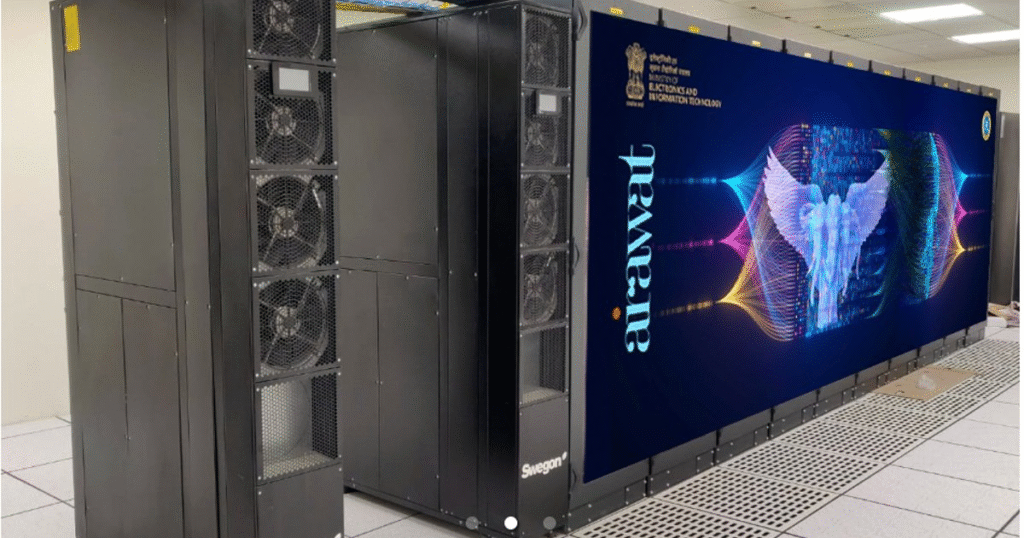In a landmark achievement for India’s growing tech ecosystem, the country has officially launched AIRAWAT, its first indigenous AI supercomputer. Developed as part of the National Program on Artificial Intelligence, AIRAWAT is designed to empower researchers, startups, and institutions with advanced computing capabilities previously available only in a few global tech hubs.
This development represents a significant leap forward for India\’s digital ambitions, placing it among the top nations capable of building and operating high-performance AI infrastructure at scale.
What Is AIRAWAT?
Named after the mythical white elephant of the heavens, AIRAWAT (AI Research Analytics and Knowledge Dissemination Platform) is an AI-focused supercomputer built at the Centre for Development of Advanced Computing (C-DAC) in Pune.
Key features of AIRAWAT include:
- Compute Power: 8.3 petaflops (ranking among the top 100 AI supercomputers globally)
- Developer Access: Available to startups, academia, and government researchers
- Energy-Efficient: Designed with low-carbon infrastructure in mind
It was launched under the Ministry of Electronics and Information Technology (MeitY) and is a core component of India’s broader Digital India and AI-for-All strategy.
Why This Matters for India
Until now, Indian researchers and innovators faced high barriers accessing world-class computing for AI model training. Many relied on foreign cloud providers, raising concerns over data privacy, sovereignty, and cost.
With AIRAWAT, India now has the ability to:
- Train large AI language models domestically
- Accelerate research in healthcare, agriculture, and climate tech
- Provide compute access to underfunded academic institutions
- Support startups building AI tools for local and global use
It levels the playing field for Indian technologists and contributes to reducing dependency on foreign infrastructure.
Global Ranking and Strategic Significance
In 2024, AIRAWAT was featured in the TOP500 and Green500 supercomputing rankings — showcasing its world-class performance and energy efficiency.
It’s currently Asia’s most power-efficient AI supercomputer, and one of the few globally that blends AI-focused architecture with indigenous design and manufacturing.
This positions India as a serious contender in the global AI infrastructure race alongside countries like the U.S., China, and Japan.
Impact Across Key Sectors
The AIRAWAT platform is already being used to support projects in:
- Healthcare: Predictive diagnostics, AI-driven drug discovery, and epidemiological modeling
- Agriculture: Climate adaptation tools, crop forecasting, and smart irrigation systems
- Language Tech: Development of Indian language LLMs to support inclusive digital transformation
- Education: Building personalized learning systems using AI tutors and analytics
Startups and research labs can access AIRAWAT through MeitY’s portal and C-DAC\’s AI research initiatives.
What’s Next for India’s AI Mission?
With AIRAWAT as a foundation, India plans to expand its AI infrastructure by building regional AI supercomputing centers and establishing national datasets for training domain-specific models.
This includes plans for:
- AI policy frameworks with ethical safeguards
- Public-private research labs in tier-2 and tier-3 cities
- Support for AI chip design startups and deeptech accelerators
India’s aim is to not only consume AI technology but to lead its creation in a way that’s inclusive, ethical, and impactful across society.
Conclusion
The launch of India’s first indigenous AI supercomputer AIRAWAT is more than a technical milestone — it’s a signal that India is ready to lead in responsible, scalable, and inclusive AI innovation. With homegrown computing power now in hand, the future of AI in India looks both promising and globally competitive.
As demand for compute and intelligence grows, AIRAWAT stands as a proud symbol of India\’s ambition to build not just for itself, but for the world.
Suggested Image: India’s AIRAWAT supercomputer racks at C-DAC Pune.
Alt Text: India’s AIRAWAT AI supercomputer inside a high-security data center




